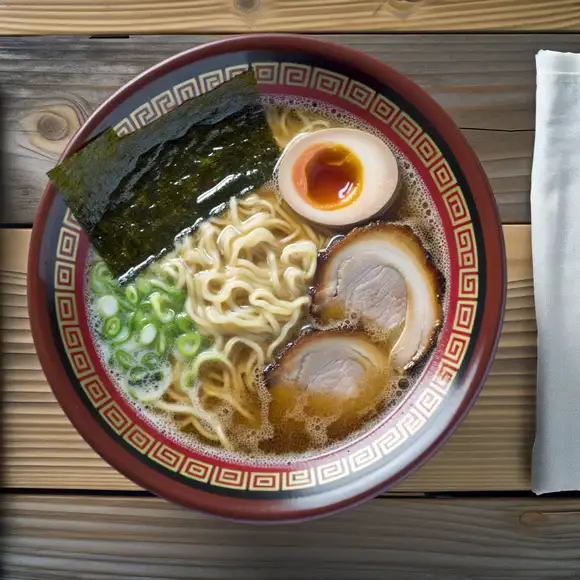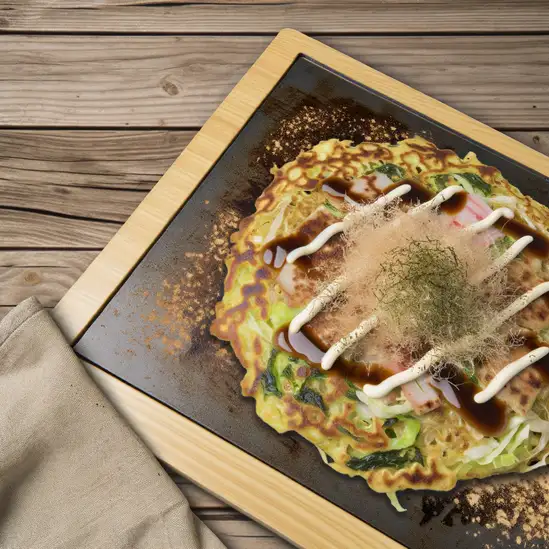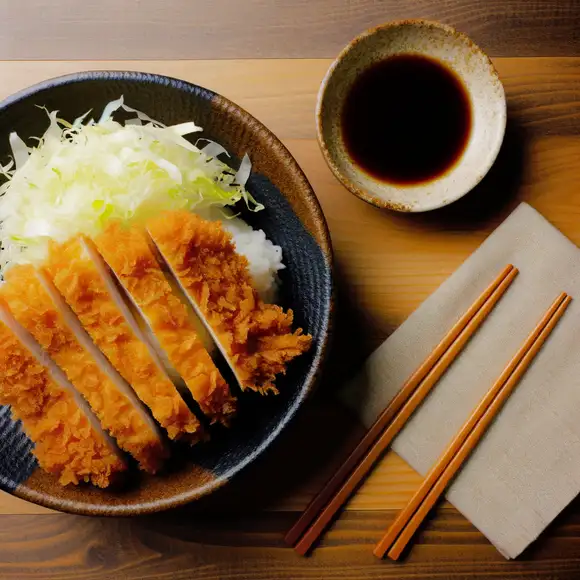


Tokyo feels like stepping into a living,breathing mosaic where tradition and futurism dance side by side. The moment you arrive,you’re swept up in a vibrant energy that hums through neon-lit streets and quiet temple gardens alike. Imagine the buzz of Shibuya Crossing,where hundreds of people move in perfect chaos,the air tinged with the scent of sizzling street food and fresh cherry blossoms in spring. It’s a city that never quite sleeps,yet somehow offers pockets of serene calm if you know where to look. Walking through Tokyo,you’ll hear a symphony of sounds—from the rhythmic clatter of trains to the soft murmur of locals chatting over steaming bowls of ramen. The city’s character is a fascinating blend of meticulous order and playful creativity. You can find centuries-old shrines nestled between sleek skyscrapers,and quirky themed cafes that feel like stepping into another world. The taste of Tokyo is unforgettable too—whether it’s the delicate umami of sushi at a tiny neighborhood spot or the comforting warmth of matcha-flavored sweets. What makes Tokyo truly unique is how it embraces contrasts without missing a beat. It’s a place where you can lose yourself in sprawling shopping districts,then find quiet reflection in a moss-covered garden. The people,warm and respectful,add a layer of kindness that makes the city feel welcoming despite its size. If you’re curious,open-hearted,and ready to explore,Tokyo will surprise you at every turn and leave you with stories you’ll want to share again and again.
The information on this page is currently being reviewed by Tripkliq and should be used as a guide only
Eng word: Hello
Eng pronunciation: Konnichiwa
Local language: こんにちは
Eng word: Goodbye
Eng pronunciation: Sayōnara
Local language: さようなら
Eng word: Thank you
Eng pronunciation: Arigatō
Local language: ありがとう
Eng word: How much
Eng pronunciation: Ikura
Local language: いくら
Eng word: Toilet
Eng pronunciation: Toire
Local language: トイレ
Eng word: Help me
Eng pronunciation: Tasukete
Local language: 助けて
Eng word: Yes
Eng pronunciation: Hai
Local language: はい
Eng word: No
Eng pronunciation: Iie
Local language: いいえ
Eng word: Excuse me
Eng pronunciation: Sumimasen
Local language: すみません
Tokyo, formerly known as Edo, transformed from a small fishing village into a bustling metropolis during the Edo Period (1603-1868) under the Tokugawa shogunate.
In 1868, Edo was renamed Tokyo, meaning 'Eastern Capital', as the imperial capital was moved from Kyoto to Tokyo following the Meiji Restoration.
The Tokyo Imperial Palace, located on the former site of Edo Castle, serves as the residence of Japan's Imperial Family, showcasing centuries of architecture and history.
In 1923, Tokyo faced a significant disaster, the Great Kanto Earthquake, which caused widespread destruction. The city's resilience and successful reconstruction are celebrated aspects of its history.
Tokyo hosted the Summer Olympics in 1964, marking the first time the Olympic Games were held in Asia. This event symbolized Japan's recovery and modernization post-World War II.
Over the decades, Tokyo has emerged as a global leader in technology and innovation, reflected in its cutting-edge architecture, transportation systems, and thriving business district.
Tokyo's Ginza district, established in the 1870s, is renowned for its luxury shopping, fine dining, and as a trendsetting area, symbolizing Tokyo's cosmopolitan and vibrant culture.
Founded in 628, Senso-ji in Asakusa is Tokyo's oldest temple and a major attraction, exemplifying the city's rich cultural and religious history.
Shibuya Crossing, known as 'The Scramble', is one of the world's busiest pedestrian crossings and symbolizes Tokyo's energy and organized chaos.
In Tokyo, the most common Power Adaptor is Type A, Type B.



Sushi is a traditional Japanese dish consisting of vinegared rice topped with various ingredients such as raw fish, seafood, and vegetables. It is a must-try in Tokyo, known for its fresh and high-quality sushi restaurants.

Ramen is a popular noodle soup dish in Japan, with various regional styles. In Tokyo, you can find a wide range of ramen shops offering different broth flavors and toppings, such as pork belly, soft-boiled eggs, and seaweed.

Tempura is a dish of battered and deep-fried seafood and vegetables. In Tokyo, you can enjoy crispy and light tempura at specialized restaurants, where the ingredients are fried to perfection.

Okonomiyaki is a savory pancake made with flour, eggs, shredded cabbage, and various toppings like pork, seafood, and cheese. In Tokyo, you can try different styles of okonomiyaki, including the Hiroshima and Osaka versions.

Tonkatsu is a breaded and deep-fried pork cutlet, typically served with shredded cabbage, rice, and tonkatsu sauce. In Tokyo, you can find tonkatsu restaurants that specialize in this crispy and flavorful dish.
If you ever find yourself craving a place where the ocean breeze carries a hint of tropical warmth and the streets hum with a laid-back island rhythm,Naha Shi in Okinawa is where you want to be. Walking through its bustling markets,you’ll catch the vibrant colors of fresh fruits and the spicy aroma of Okinawan cuisine wafting through the air—think sweet purple sweet potatoes and tangy goya stir-fries that tease your taste buds. The city feels alive but never rushed,like it’s inviting you to slow down and savor every moment.
Naha’s charm lies in its blend of old and new. You can wander through the historic Shuri Castle grounds,where the echoes of Ryukyu Kingdom royalty still seem to linger,then stroll just a few blocks to modern cafes and quirky shops that pulse with youthful energy. The locals are warm and welcoming,often eager to share stories or recommend their favorite spots for a refreshing sata andagi (Okinawan doughnut) or a cup of jasmine tea.
As the sun dips low,the harbor lights twinkle against the backdrop of turquoise waters,and the gentle sound of waves mingles with distant laughter from street performers. It’s a city that feels like a gentle embrace—rich in culture,alive with flavor,and wrapped in the kind of peaceful energy that makes you want to stay a little longer,just to soak it all in.
If you ever find yourself in Japan during winter,Sapporo-shi is a city that wraps you in a cozy,spirited embrace unlike anywhere else. Imagine crisp,snowy streets lined with softly glowing lanterns,the air tinged with the scent of pine and sizzling street food. The city hums with a lively yet laid-back energy—locals chatting over steaming bowls of miso ramen or clinking glasses of rich,locally brewed beer. It’s a place where modern city life meets nature’s quiet beauty,all under a sky that often blushes pink at sunset.
Walking through Odori Park,you’ll hear the crunch of fresh snow beneath your boots and catch glimpses of intricate ice sculptures shimmering in the cold air,especially during the famous Snow Festival. The architecture is a charming mix of clean,contemporary lines and historic European influences,giving the city a unique personality that feels both familiar and refreshingly new. Cafés spill warm light onto the streets,inviting you in to savor Hokkaido’s creamy dairy treats or a perfectly brewed cup of coffee.
What really makes Sapporo special is its genuine warmth—people here are friendly without being overbearing,proud of their city’s rich culture and natural bounty. Whether you’re wandering through the bustling Nijo Market tasting fresh seafood or hiking nearby trails that open up to breathtaking views,Sapporo feels like a place that invites you to slow down,breathe deeply,and savor every moment.
If you find yourself wandering through Fukuoka-shi,you’ll immediately notice a refreshing blend of vibrant city life and laid-back coastal charm. The air carries a subtle saltiness from the nearby sea,mingling with the enticing aroma of street food stalls sizzling with fresh yakitori and steaming bowls of Hakata ramen. It’s a city that hums with energy but never feels overwhelming—like a close-knit community that’s just big enough to surprise you at every corner.
Walking through the bustling Nakasu district at night,neon lights flicker against the river’s calm surface,while laughter and chatter spill out from cozy izakayas. The city’s pulse is warm and inviting,with locals who are proud yet unpretentious,always ready to share a story or recommend their favorite spot. Fukuoka’s rich history peeks through in its temples and shrines,but it’s the modern art galleries and lively festivals that show how the city embraces both tradition and innovation.
What really sets Fukuoka apart is its pace—fast enough to keep you intrigued,slow enough to savor. Imagine sitting by the waterfront,a gentle breeze brushing your face,as you sip on a cold yuzu drink and watch fishing boats bobbing gently. It’s a place where you can dive into Japan’s culinary delights,explore vibrant markets,and still find quiet moments to just breathe and soak it all in. Trust me,Fukuoka feels like a warm welcome you didn’t know you needed.
Seoul feels like a city that’s constantly humming with life,where ancient traditions and cutting-edge modernity dance side by side. Imagine wandering through narrow alleys lined with hanok houses,their wooden beams glowing softly in the afternoon sun,then stepping out into bustling streets filled with neon signs and the irresistible aroma of sizzling street food. The city’s energy is contagious—there’s a rhythm to it,from the chatter of locals bargaining at markets to the steady beat of K-pop spilling out of cafes.
What really sticks with you is how Seoul engages all your senses. You’ll hear the clatter of chopsticks and laughter at a late-night pojangmacha (street food tent),smell the sweet,smoky scent of grilled meat mingling with spicy kimchi,and feel the crisp breeze along the Han River as joggers and families enjoy the parks. The city’s layers reveal themselves slowly—ancient palaces tucked between skyscrapers,tranquil temples offering quiet moments amid the urban rush.
Seoul’s character is a blend of warmth and innovation. People are friendly and proud of their culture,eager to share stories over a cup of rich,bitter coffee or a bowl of comforting bibimbap. Whether you’re exploring art galleries in trendy neighborhoods like Hongdae or soaking in the panoramic views from Namsan Tower,there’s a genuine pulse here that invites you to dive deeper,to taste,listen,and truly feel the city’s soul.
Imagine stepping into a city where the buzz of scooters blends with the inviting aroma of street food sizzling on every corner—that’s Taipei for you. It’s a place where ancient temples nestle beside gleaming skyscrapers,and night markets pulse with life long after the sun dips below the horizon. Walking through Taipei,you feel this vibrant energy that’s both electric and warmly familiar,like a city that’s constantly awake but never rushed.
The streets are alive with colors and sounds:vendors calling out their specials,the clatter of mahjong tiles in cozy tea houses,and the sweet scent of bubble tea mingling with the earthy fragrance of freshly steamed dumplings. Taipei’s culture is a beautiful blend of tradition and modernity,where you can explore centuries-old heritage at Longshan Temple,then hop on a high-speed train to the top of Taipei 101 for a jaw-dropping cityscape view.
What really sticks with you is the genuine kindness of the people—locals who are eager to share their favorite night market stalls or recommend a quiet café tucked away in a leafy alley. Whether you’re savoring a bowl of beef noodle soup or wandering through the lush trails of Elephant Mountain,Taipei feels like a city that invites you to slow down,explore deeply,and savor every moment.
Bangkok is one of those cities that grabs you the moment you step out into its bustling streets. There’s this electric energy in the air—a mix of honking tuk-tuks,sizzling street food stalls,and the chatter of locals weaving through markets. The city feels alive,like it’s constantly moving and breathing,yet somehow it balances this chaos with moments of serene beauty,like the golden spires of temples catching the afternoon sun or quiet canals reflecting the sky.
Walking through Bangkok,you’ll be hit by a whirlwind of scents:fragrant jasmine from flower vendors,the sharp tang of lemongrass and chili from street carts,and the sweet aroma of mango sticky rice tempting you at every corner. The colors are just as vivid—neon signs flicker alongside traditional wooden shophouses,and monks in saffron robes glide past modern skyscrapers. It’s a city where old and new dance together effortlessly.
What really makes Bangkok special is its warmth and openness. The people here have a genuine kindness that shines through,whether you’re bargaining at Chatuchak Market or sharing a laugh over a bowl of spicy boat noodles. The culture is rich and layered,from the intricate rituals at Wat Pho to the lively festivals that light up the streets. Visiting Bangkok feels like stepping into a story that’s still unfolding,full of surprises and moments that stay with you long after you leave.
Tourists are lured into bars by touts and then presented with exorbitant bills for drinks and services they didn't order.
Individuals dressed as monks approach tourists, offering 'free' blessings or trinkets, then demand donations.
Scammers sell fake or overpriced tickets to popular attractions or events, leaving tourists unable to enter.
Scammers pose as charity workers, asking for donations for fake causes.
Tourists are invited to participate in street gambling games, which are rigged to ensure they lose money.
Some taxi drivers may take longer routes or charge extra fees, especially late at night or in tourist-heavy areas.
Japan has very strict drug laws, and this includes Tokyo. The possession, use, or trafficking of illegal drugs, including marijuana, is strictly prohibited and can result in severe penalties, including imprisonment and deportation. Prescription medications that are legal in other countries may also be restricted or require special permission to bring into Japan. Tourists should ensure they have the necessary documentation for any prescription medications and should avoid any involvement with illegal drugs.
In Tokyo, smoking is regulated by both national and local laws. Smoking is generally prohibited in many public places, including streets, parks, and public transportation. Designated smoking areas are available in some locations, such as certain restaurants, bars, and specific outdoor areas. Violators may face fines. Additionally, many wards in Tokyo, such as Chiyoda and Shinjuku, have stricter regulations and designated non-smoking zones.
Vaping is subject to similar regulations as smoking in Tokyo. It is prohibited in many public places and allowed only in designated areas. The use of e-cigarettes containing nicotine is regulated, and importing nicotine-containing e-liquids for personal use is restricted. Tourists should be cautious and use vaping devices only in designated smoking areas to avoid fines.
What are other people saying about Tokyo?
Recent Social posts about Tokyo
There is nothing to show you for now.